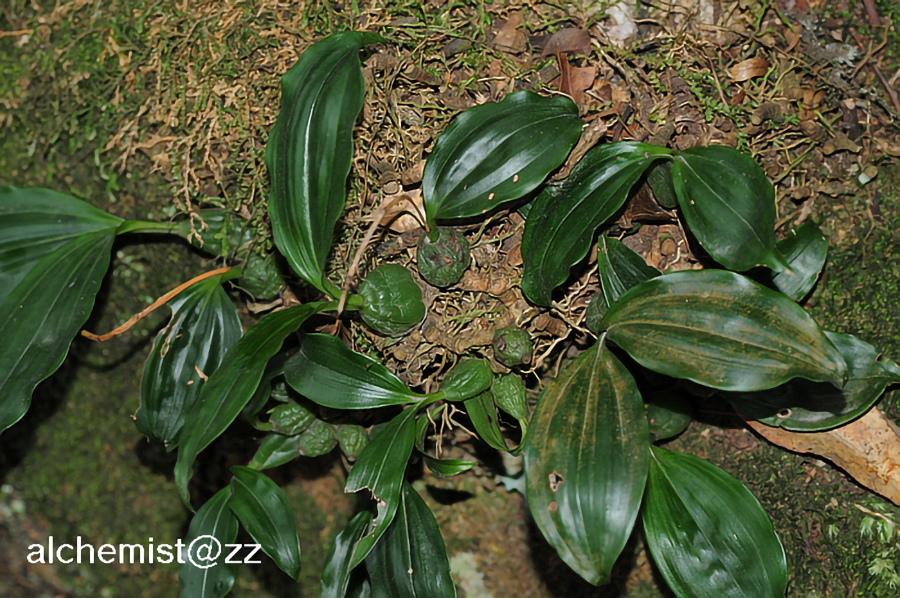- Scientific Name: Pholidota chinensis Lindley
- Ref: J. Hort. Soc. London. 2: 308. 1847.
- Chinese Common Name: 石仙桃 shíxiāntáo
- Family: Orchidaceae
- Genus: Pholidota
- Distribution: Epiphytic on trees or lithophytic on rocks in forests or at forest margins, shaded places on cliffs; 900-2100 m. N Fujian, Guangdong, Guangxi, SW Guizhou, Hainan, SE Xizang, W to SE Yunnan, S Zhejiang [Myanmar, Vietnam].
Rhizome creeping, 3-8 mm in diam. or thicker, with rather dense nodes and many roots. Pseudobulbs borne (3-)5-15 cm apart on rhizome, narrowly ovoid-oblong, variable in size, usually 1.6-8 cm × 5-23 mm; petiole 0.5-2 cm, apex 2-leaved. Leaf blade turning blackish when dried, obovate-elliptic, oblanceolate-elliptic, or suboblong, 5-22 × 2-6 cm, with 3 rather conspicuous veins, apex acuminate, acute, or shortly caudate; petiole 1-5 cm. Inflorescence arising with young pseudobulb and young leaves from base of last pseudobulb, 12-38 cm; rachis often ± arching, several to 20-flowered, slightly flexuous; floral bracts persistent at least at end of flowering, oblong to broadly ovate, often ± conduplicate, 1-1.7 × 0.6-0.8 cm. Flowers white or tinged yellowish; pedicel and ovary 4-8 mm. Dorsal sepal elliptic or ovate-elliptic, cymbiform, 7-10 × 4.5-6 mm, dorsally slightly carinate; lateral sepals ovate-lanceolate, slightly narrower than dorsal sepal, conspicuously carinate. Petals lanceolate, 9-10 × 1-2.5 mm (see note below); lip ± broadly ovate in outline, slightly 3-lobed, basal half saccate and with 2 suborbicular lateral lobes on both sides; mid-lobe ovate, 4-5 × 4-5 mm, mucronate. Column 4-5 mm, winged above middle; rostellum broadly ligulate. Capsule obovoid-ellipsoid, 1.5-3 × 1-1.6 cm, 6-ridged, with narrow wings on 3 ridges; fruiting pedicel 4-6 mm. Fl. Apr-May, fr. Sep-Jan. 2n = 38, 40. (Flora of China)
